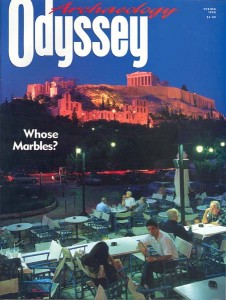The Pass Less Taken?
Sidebar to: In Pharaoh’s Footsteps

For 20 years, Pharaoh Thutmose III (1504–1450 B.C.) led yearly military assaults against western Asia. The details of these conquests are preserved in Thutmose’s annals carved on the walls of the Temple of Amun at Karnak. A relief from the temple’s seventh pylon (see photo, above), for example, depicts a triumphant Thutmose holding his cowering prisoners by their hair, preparing to smite them. In 1479 B.C., Thutmose III’s army attacked Megiddo to quell a Canaanite uprising. Like General Allenby almost 3,400 years later, Thutmose III had to choose from three possible paths for his assault on Megiddo: He could attack along the safe, winding routes to the north or south, or he could sprint up the treacherous, narrow central pass. His generals argued against taking the direct route:
“What is it like to go on this road which becomes so narrow? It is reported that the foe is there, waiting on the outside, while they are becoming more numerous. Will not horse have to go after horse, and the army and the people similarly? Will the vanguard of us be fighting while the rear guard is waiting here in Aruna, unable to fight? Now two other roads are here. One of the roads comes out at Taanach. The other will come out to the north of Megiddo. Let our victorious lord proceed on the one of them which is satisfactory to his heart, but do not make us go on the difficult road!”
But then Thutmose replied: “I shall proceed upon this Aruna road! Let him of you who wishes go upon these roads of which you speak, and let him of you who wishes come in the following of my majesty!”
Already a library member? Log in here.
Institution user? Log in with your IP address.

